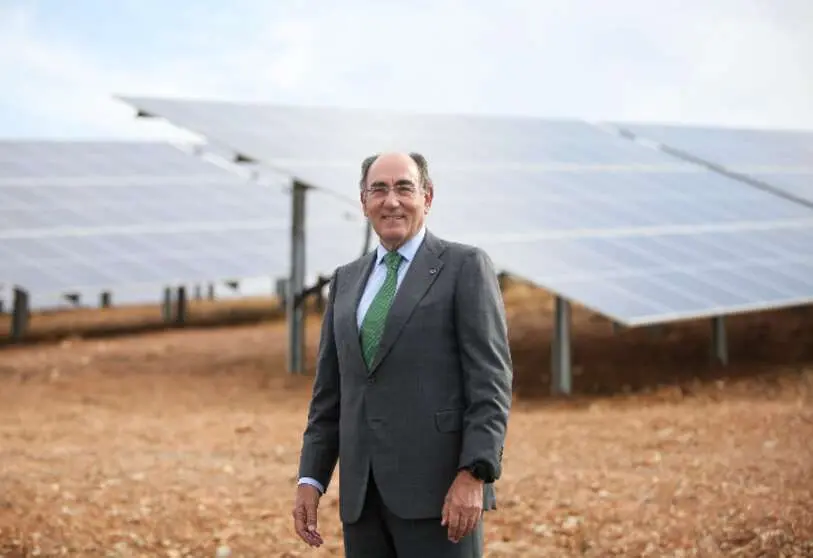Good weather has saved Europe this winter. Here's what we must do to avoid future energy crises

With the exception of a cold snap in December, most of Europe has enjoyed unusually high temperatures this winter. And with spring now in sight, we may well avoid an energy crisis that could have caused serious disruption to industries and millions of households across Europe.
In recent months, Europe has taken steps to modulate consumption, fill gas storage facilities and maximise coordination. However, a severe winter would have posed a major challenge for all.
Recognising this, we should make a concerted effort in the early months of 2023 to ensure that energy security is not left to chance next winter and in the years to come. It would be absurd to continue to rely on the weather to bail out a European energy system overly dependent on foreign fossil fuel reserves.
Today, about 80% of the world's energy needs are met by fossil fuels.
If ever there was a time to change course and radically reshape the way we produce and consume energy, it is now. The current tragedy of the Ukrainian invasion is the latest in a series of wider crises that have oil and gas implications as a common factor. 2023 is the year to finally break the cycle, through sustained investment and innovation in clean energy generation and power grids.
That is why at Iberdrola we have set out five clear areas of action for this year, five fundamentals to move faster towards green energy security.
Wind and solar farms are increasingly common, but the task of decarbonising electricity generation is far from over. Even the UK, which has made great strides in renewables deployment in recent years, will still rely on gas and coal for 40-50% of its electricity production by 2022.
One of the biggest obstacles to adding more renewables to the energy mix remains planning and permitting. So far, too many countries have announced renewable energy targets and ambitions without considering the broader context. We need more than rhetoric. We need the mechanisms to deliver renewables, which must be integrated and prioritised in planning policies and environmental permitting processes.
More renewable energy generation is needed, but if the electricity grids that transport this clean energy are not up to the task, the investment is meaningless.
We need sustained and well-planned investment in these grids.
Globally, renewable energy generation will increase five-fold by 2040. Electricity demand levels will also soar due to the increased use of electric cars and low-carbon heating. In the US alone, the electricity grid will need to expand by at least 60% by 2030. Based on historical developments, this represents a century of work to be completed in less than a decade.
Electricity grids are the backbone of heat supply and electricity transmission, the glue that holds our energy system together. Once again, planning and permitting are the main culprits for the delay to date. Regulators overseeing energy grids around the world increasingly recognise the need to be more agile, more far-sighted and more willing to accept "no regrets" investments, but there is still room for improvement.
This fuel, crucial to decarbonising key parts of the heavy industry and transport sectors, has been a hot topic of conversation. The time has come to take significant steps to expand the deployment of hydrogen produced from renewable energy, the only truly sustainable (and increasingly competitive compared to blue or grey hydrogen, which is produced from fossil fuels).
For green hydrogen to contribute to the decarbonisation of sectors such as ammonia or methanol production, it must be on a level playing field. Currently, green hydrogen (from renewables) is more expensive to produce than grey hydrogen (from fossil fuels). However, grey hydrogen comes at the cost of high carbon emissions and keeps us dependent on fossil fuels.
The importance of innovation at scale to drive the optimal deployment of renewables, grids, electric vehicles and energy storage systems cannot be overemphasised. At Iberdrola we have recently published our plans to double innovation spending by 2030.
Encouragingly, the International Energy Agency recently said that global public spending on energy research and development was 5% higher in 2021 than in 2020. But this is still not enough. Companies and governments need to remain bold, despite a tougher recessionary environment and tighter investment conditions.
Finally, we must not lose sight of the long-term prize of decarbonisation. 2022 was characterised by short-term, reactive and often unpredictable government interventions in the energy market: unforeseen taxes drafted in a confused way, price support schemes on the brink, and reversions to old and polluting technologies at the last moment.
2023 has to be different. It is the year to show leadership, be decisive and put us all on a sustainable path out of a crisis caused by over-dependence on fossil fuels.
To protect citizens and our economies in the years ahead, we must rely on our judgement, rather than relying on luck.
*This article originally appeared on Fortune.com.








